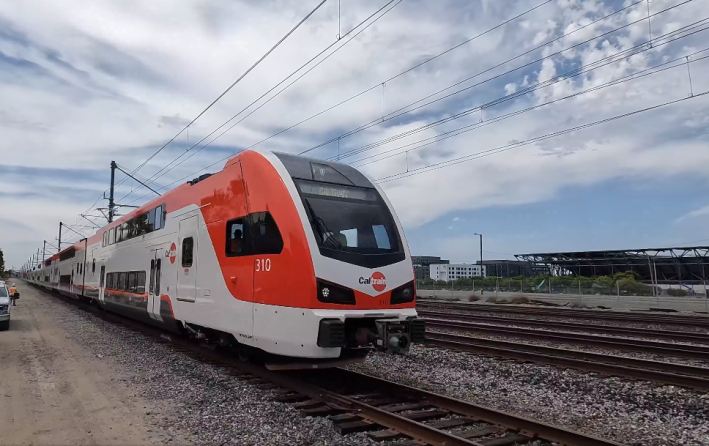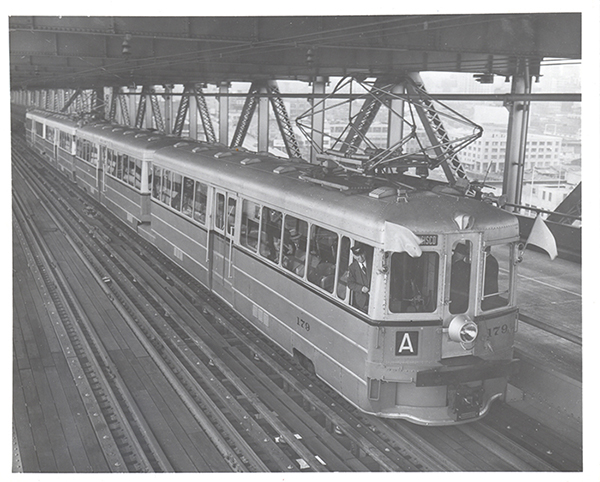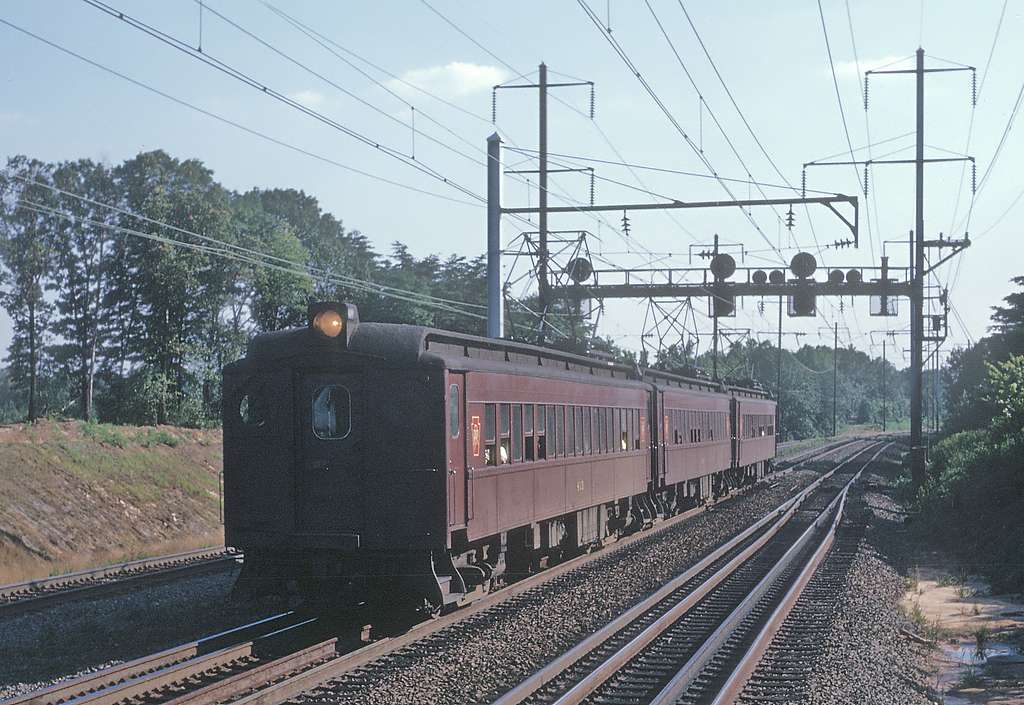Note: GJEL Accident Attorneys regularly sponsors coverage on Streetsblog San Francisco and Streetsblog California. Unless noted in the story, GJEL Accident Attorneys is not consulted for the content or editorial direction of the sponsored content.
"The future happens here," said Governor Gavin Newsom at Saturday's media event marking the start of electrified passenger service on Caltrain. "We don't imitate, we are a model to others."
Other politicians made similar claims about California "pioneering" and "leading the way" with Caltrain electrification. Senator Alex Padilla called Caltrain the "first electric commuter train in California history."
It was hard not to snicker. As should be obvious to anyone who's spent time in Europe, Asia, or even New Jersey—or anybody familiar with California's rail history—there's nothing innovative or pioneering about Caltrain electrification.
But that's okay. Caltrain electrification is still a really good thing.
The truth is, running wires over trains so they go faster and don't pollute is just boring, meat-and-potatoes transportation. The lead image is a 1970 photo of a train called an MP54, originally built in 1908. Those trains, which ran all over the Northeast, were essentially the same technology as Caltrain's new rolling stock (minus the onboard WiFi of course). Amtrak, New Jersey Transit, and other eastern railroads still run modern equivalents of MP54s on the same infrastructure.

Even in California, electrified commuter and intercity trains were once ubiquitous. And I'm not just talking about Muni's streetcars. SF Gate's great Caltrain coverage included some of that history:
A century ago, the Peninsula service was one of several Bay Area regional rail systems. Its peers — the Key System, the Peninsular in the South Bay, the Sacramento Northern, all electric — shrank and expired as people switched to autos, although you can still see remnants, and BART reused some of the old rights of way. San Francisco kept its streetcars, the only Bay Area city to do so.

There were also electric trains between the Bay Area and Sacramento. There was electric service throughout Marin. And of course there was the famous Red Car electric rail system throughout Los Angeles. But unlike in the Northeast and Europe, nearly all of California's electric rails of old were ripped out and replaced with highways. Today, it's generally accepted that destroying these railroads was a colossal act of civic vandalism.
California should build on what it has accomplished with Caltrain, but state leaders don't need to pretend that it's "pioneering." They also don't need to mess around with unproven technology and distractions such as hydrogen trains and hyperloops. Humanity solved short-to-medium-distance intercity transportation in 1879 when Germany's Ernst Werner von Siemens invented the electric train. Rail electrification using overhead wire is mature, proven technology that just works.
Meanwhile, the crews and engineers who built the electrical substations and strung the wire over Caltrain are packing up right now and moving to other parts of the world to find work. How foolish is it that the state isn't just continuing to electrify, by moving the crews and equipment over to the Capitol Corridor between San Jose and Sacramento? Let's hope the state can get them back to string wire in the Central Valley in a couple of years for high-speed rail.
If Newsom and the rest of the California delegation really want to set an example for the rest of the country, let alone the world, they need to take things much further. They need to shift the majority of the state's transportation funds away from highways. They need to fully fund California High-Speed Rail all the way from Sacramento to San Diego. And they need to rebuild what we've lost, upgrade and replace tracks, and re-electrify the state's rail system with tried-and-true overhead wire, everywhere, all at once. Only then would California be in a position to say it's setting an example and truly leading the way.






